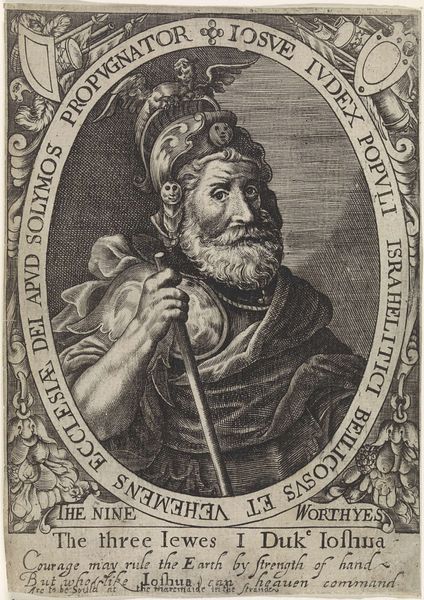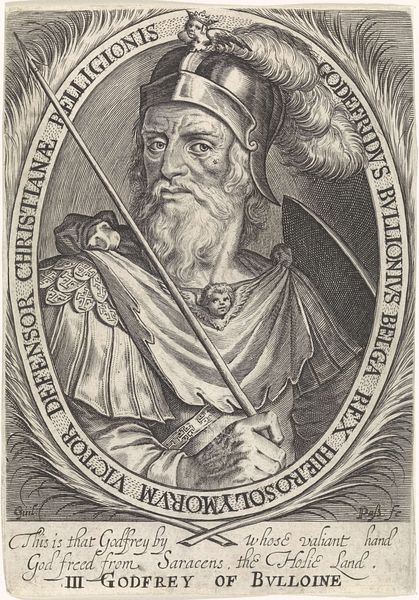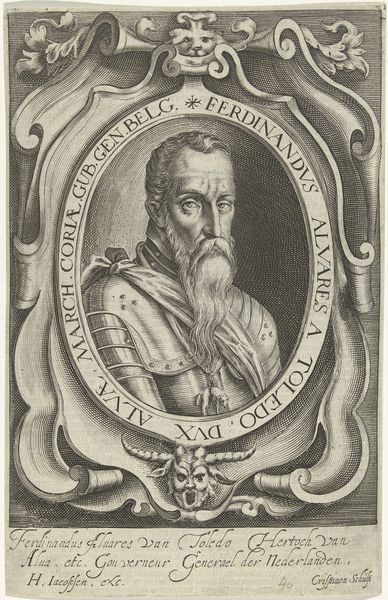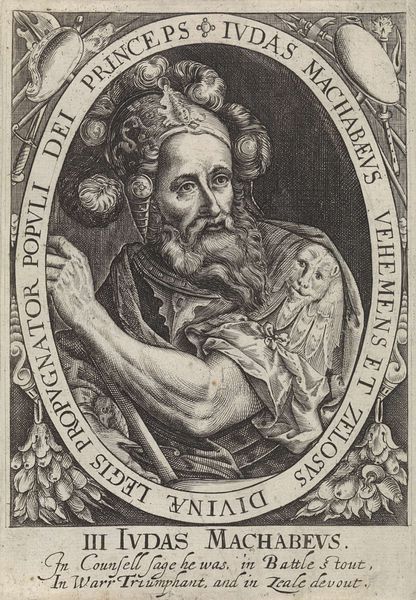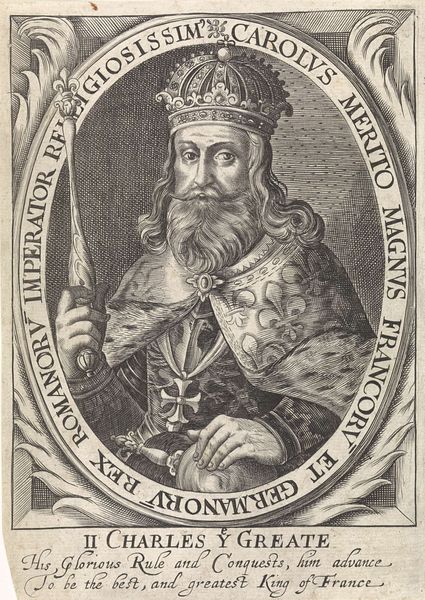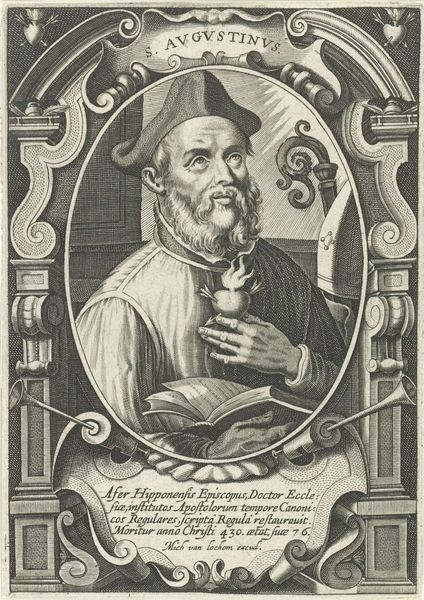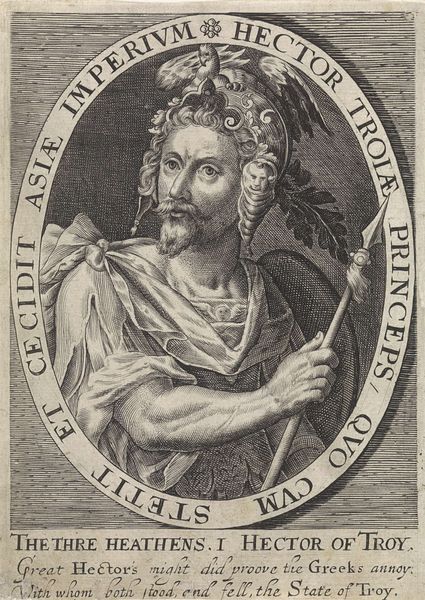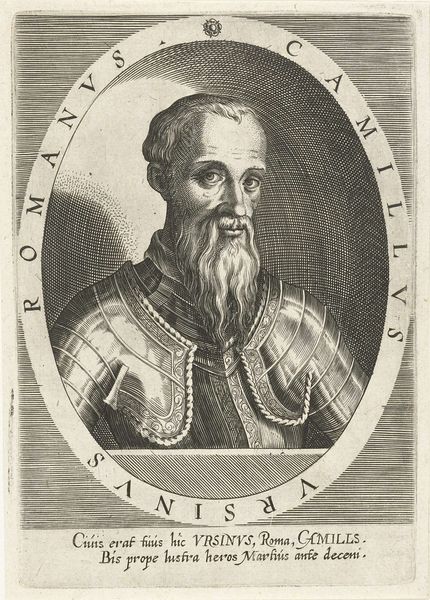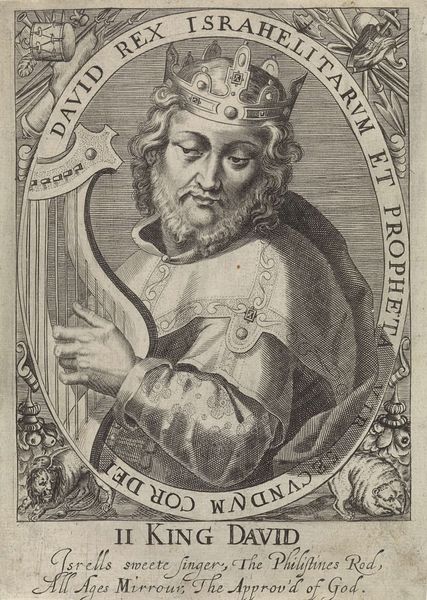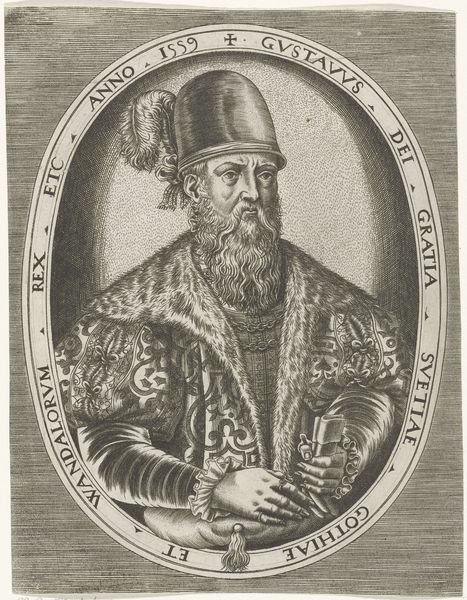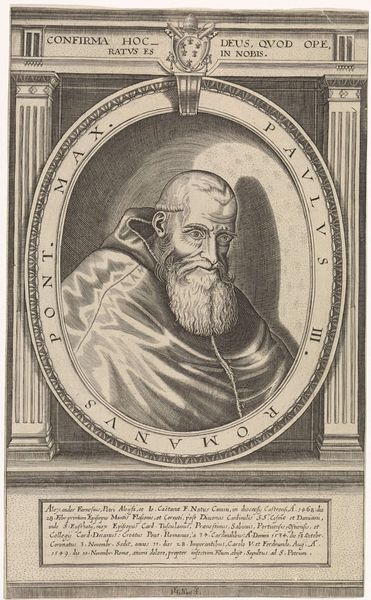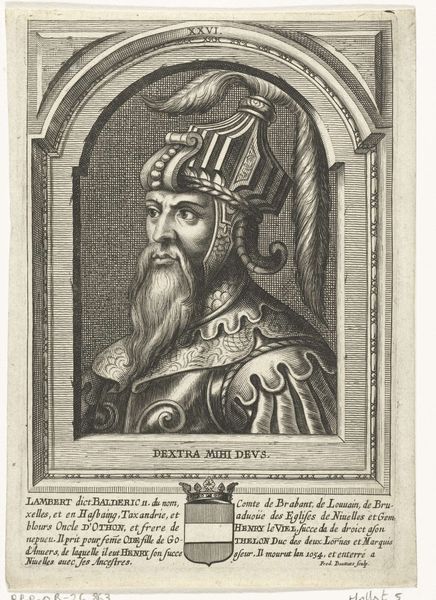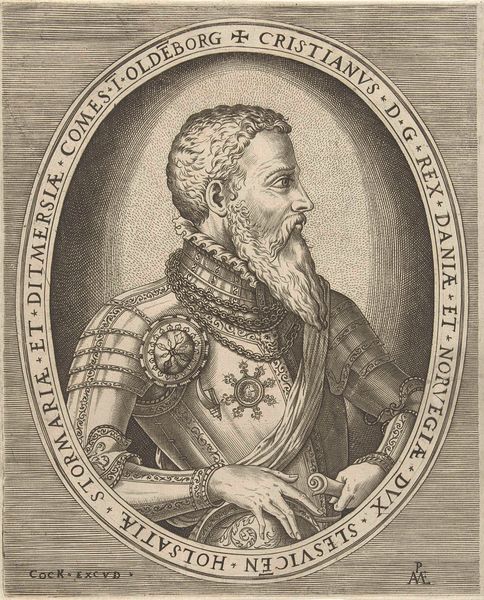
engraving
#
portrait
#
baroque
#
pen drawing
#
history-painting
#
engraving
Dimensions: height 178 mm, width 122 mm
Copyright: Rijks Museum: Open Domain
Curator: Here we have Willem de Passe's engraving of King Arthur as one of the Nine Worthies, dating back to between 1621 and 1636. Editor: My first thought is of texture. The density of line work almost gives him a woolly feel, doesn't it? I am fascinated by the material reality of its production—the artist painstakingly incising lines into a metal plate. Curator: Absolutely, the image certainly exudes presence and heft, particularly when understanding that its imagery seeks to build on an idealized notion of Kingship and heroism. The Latin inscription 'MVLTARVM GENTIVM GLORIOSISSIMVS ARTHVRVS MAGNVS BRITANNIA REX VICTOR' which can be translated to "The most glorious Arthur, Great King of Britain, Victor over many nations". He becomes this figure of a collective memory, built from history and fantasy. Editor: It’s interesting you point that out, because beyond the inscription, there’s a tangible feeling to how the engraving depicts Arthur’s armor. Each tiny engraved line is an act of labor in the service of constructing this almost impossibly grand idea of leadership, valor, and royalty. Curator: The armor also represents something psychologically important, as this piece was produced amidst various political tensions, including those leading up to the English Civil War. He is almost literally burdened by history and destiny, reflecting a complex narrative of a nation searching for a defining image. Editor: And isn’t that interesting? We have here an incredibly reproducible medium - engraving – tasked with the production of this supposedly unique and idealized… figure. Is the point to distribute that grand image? To allow it to be consumed by a wider audience? Curator: Yes, disseminating images and associated ideas of power would have been vital. These works serve as psychological anchors, particularly when social and political climates feel precarious. A picture to remind its audience that 'all will be well'. Editor: Precisely, so this isn't just art, but propaganda. Thinking of all the social labor condensed in this little rectangle of paper! Thank you. That reframes the way I'm approaching the work. Curator: My pleasure, It has made me think of the layers of meanings we can give to the past, how memories themselves become shaped and reshaped depending on social needs and expectations.
Comments
No comments
Be the first to comment and join the conversation on the ultimate creative platform.
